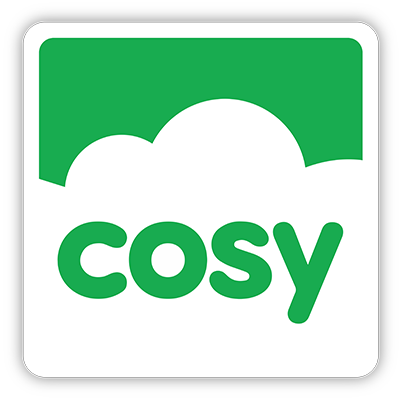Sand and Water Play Ideas
Sand and water play are vital sensory experiences for early years and beyond. They lend themselves well to the hands on learning style which appeals to most children. The learning potential is huge but these areas of provision can sometimes needs a little inspiration. We hope that the ideas in this blog will inspire you with your sand and water play.
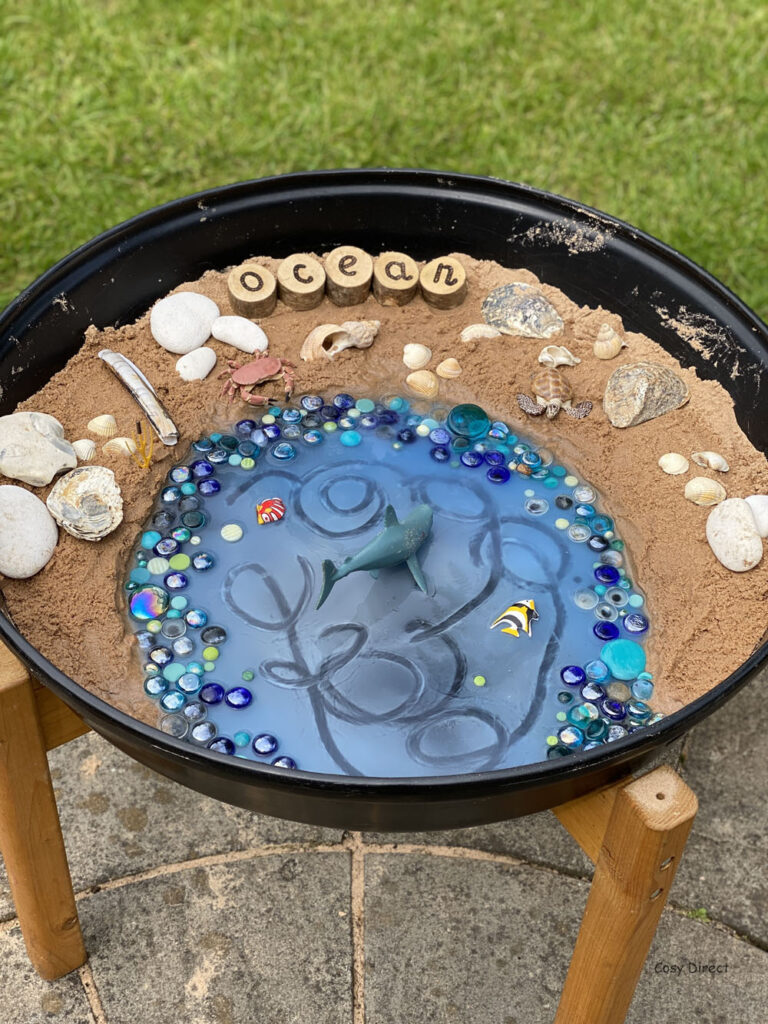
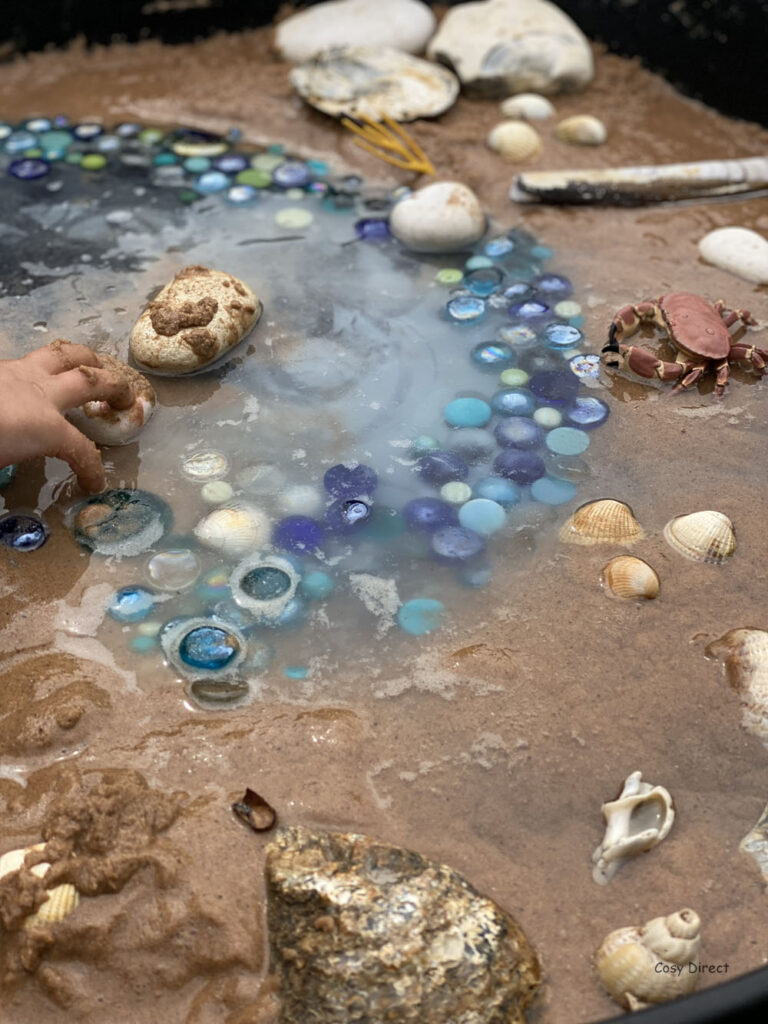
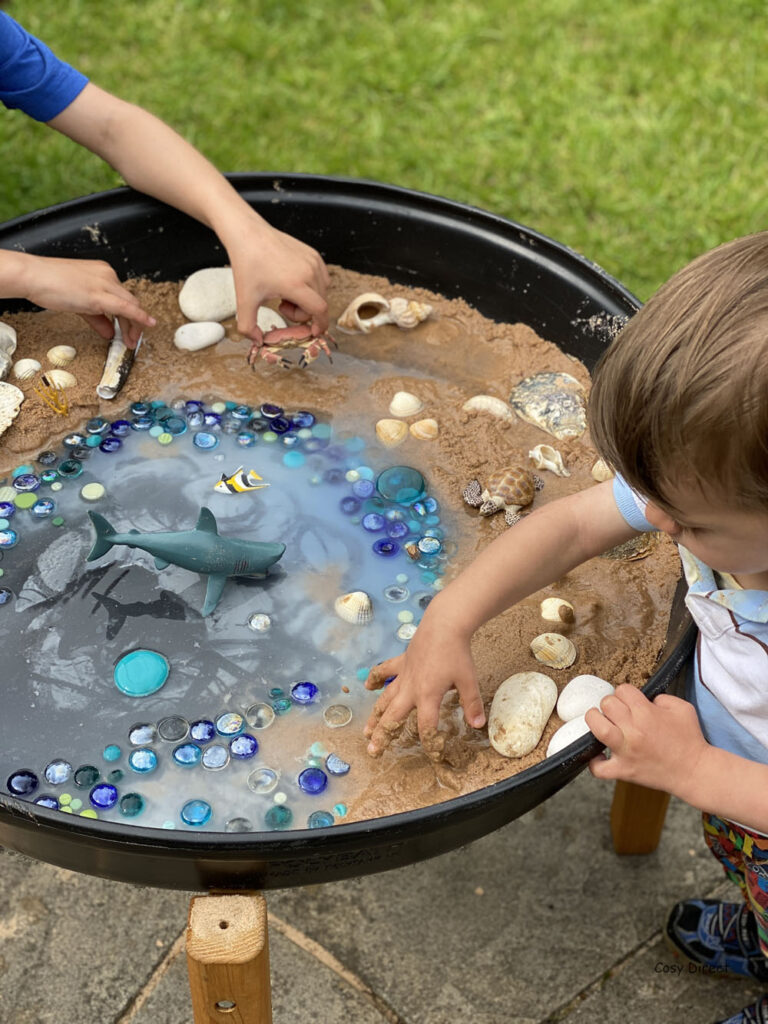
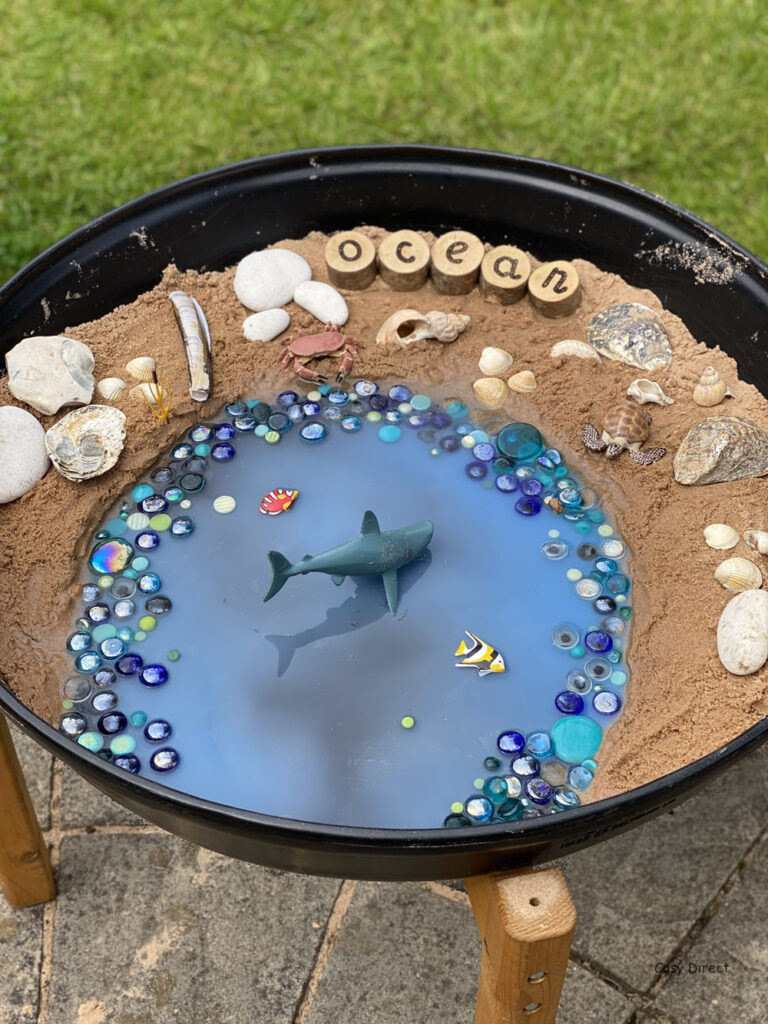
Sand:
It sounds so simple but can be tremendously effective - just add water! Allow children to explore the change in consistency between wet and dry, thinking about its properties. Wet sand will bring a different element to the play - shape and mould it, use for mark-making, create impressions, build tunnels and roadways, make sand pies, patterns or have a treasure hunt. Wet sand feels and moves so differently to dry sand so makes a great prompt for language development too.
Add some washing up liquid or shaving foam to your sand to create sand moose, children will love exploring this new sand texture.

Sand is a fantastic base for small world play set ups, particularly in a tuff spot. Use it for dinosaur worlds, fairylands, construction sites, beach scenes and moonscapes. Just combine with natural resources and loose parts to enhance open-ended play. Some ideas are pebbles, sticks, shells, cones, petals, herbs and coconut shells.

We know that mark-making and writing is so much more than pens and paper - sand is a great, sensory way to inspire children to get creative. Add tools such as sticks, paintbrushes, vehicles and forks to prompt mark making. Fingers are good too! Extend the play by adding shapes or patterns for children to copy, fantastic for developing fine motor skills.
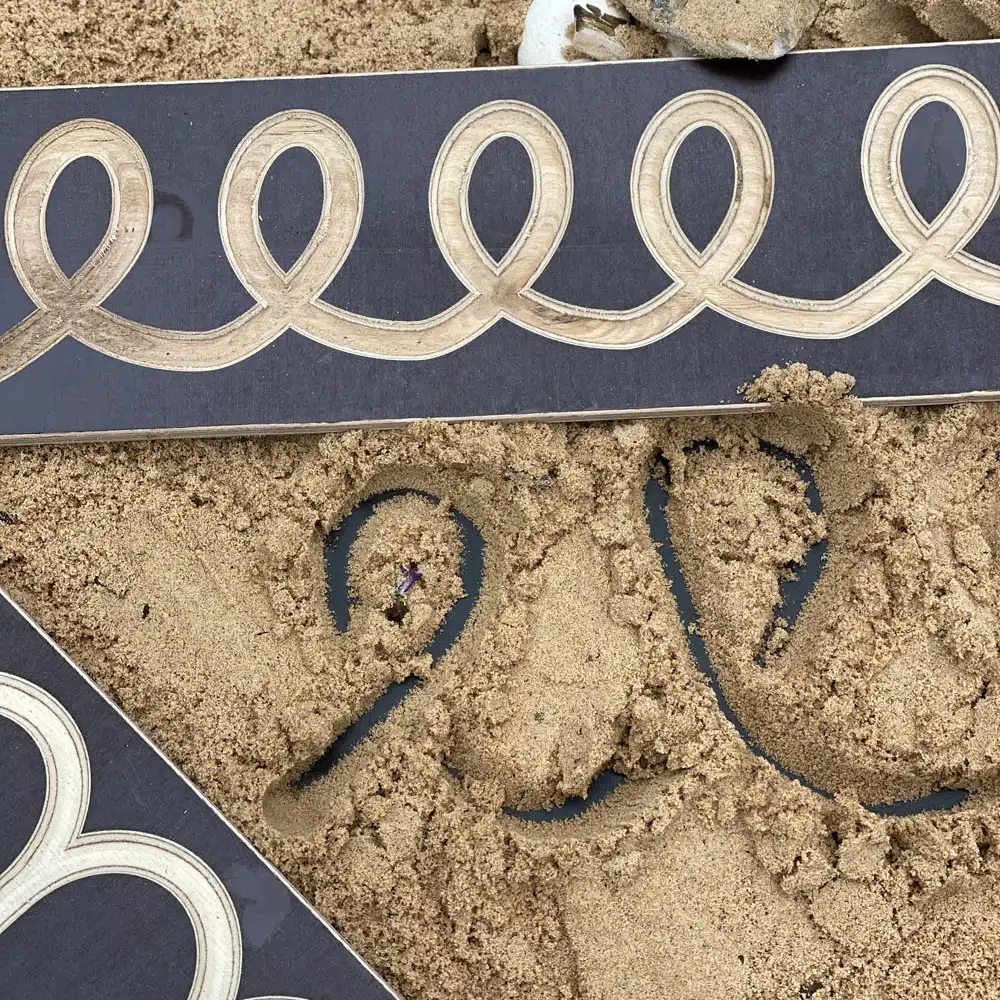


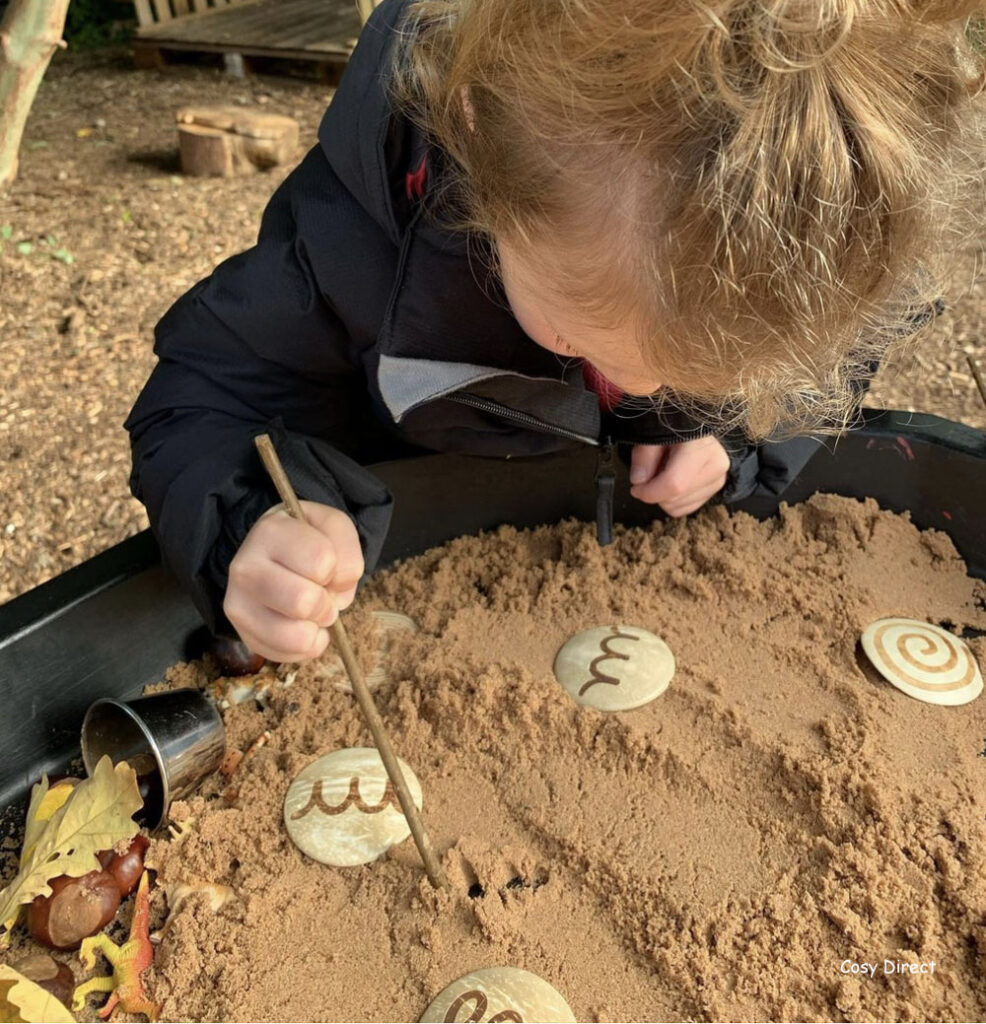
Add loose parts to your sand provision for some amazing open ended play and learning. Children can use them to make patterns such as mandalas, or use them to make shapes or letters. There are also opportunities for counting, sorting, exploring size, symmetry and shape. Try pine cones, shells, different sized pebbles, petals, wood slices, leaves, sticks and seasonal treasures.
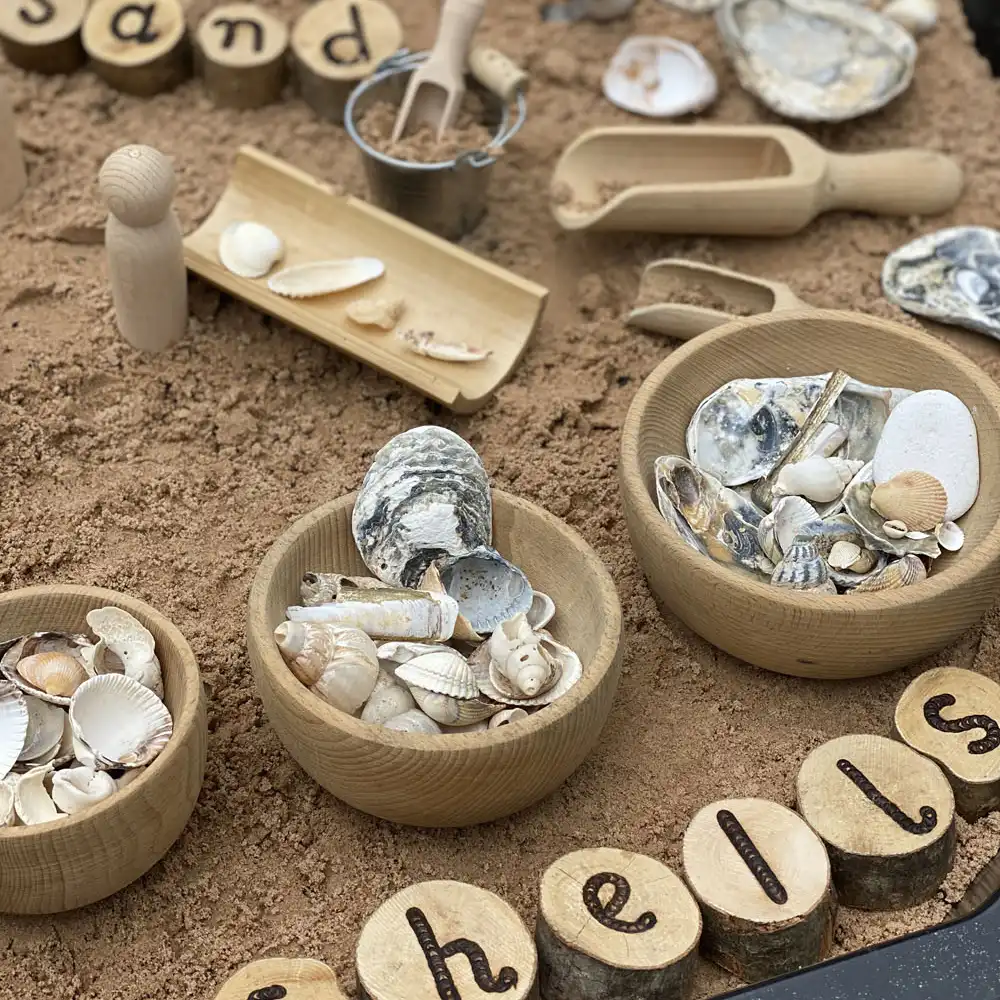

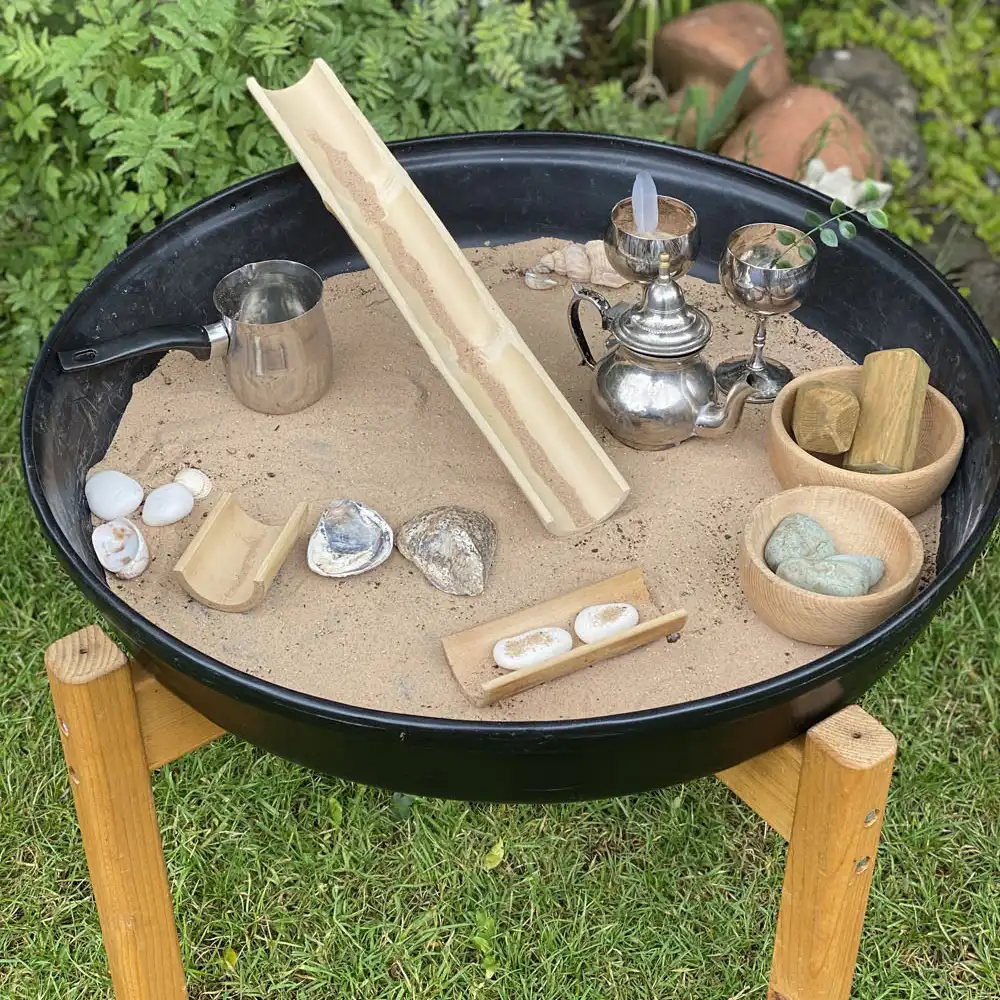
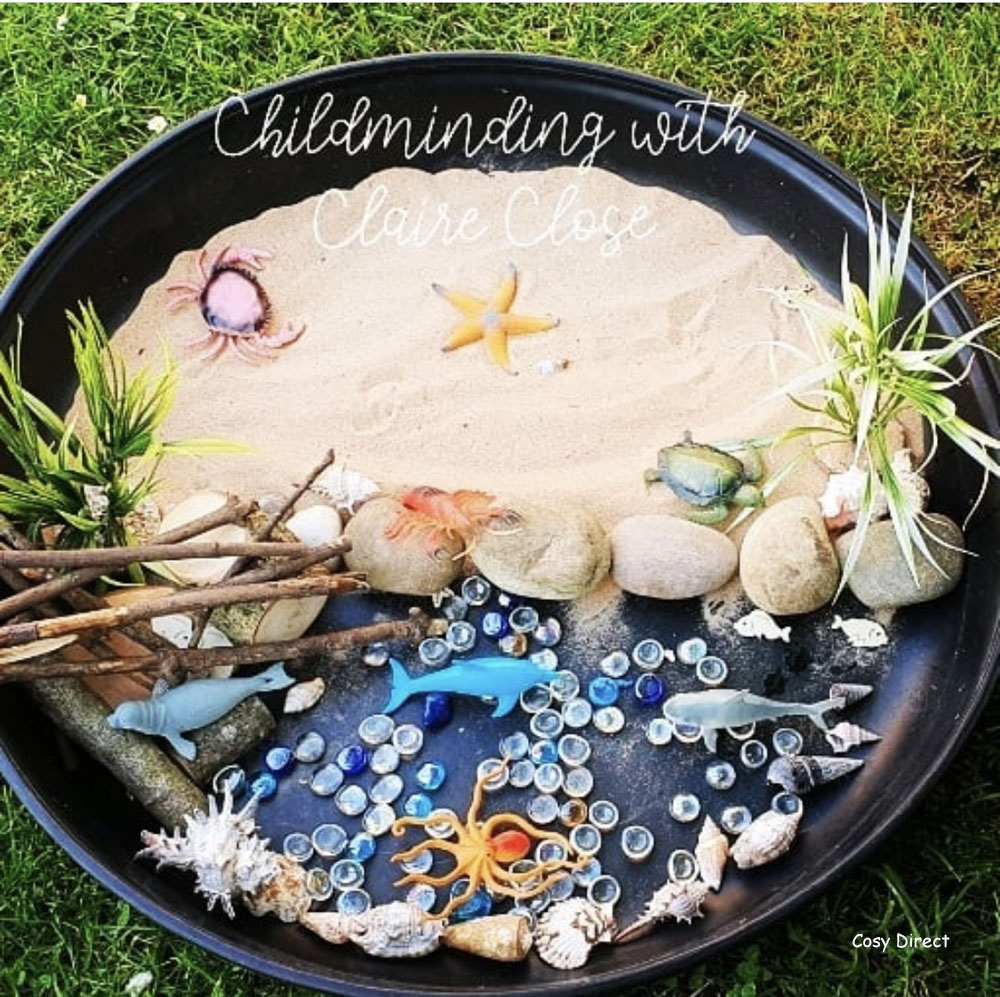
Water:
Children love making potions and concoctions so add some additions to your water provision to enable this imagination and creative play. Resources which are particularly good include...
- 'real' cups and saucers
- ingredients: petals, herbs
- jugs
- pipettes and basters
- different sized spoons and ladles
- tongs and tweezers
The tuff spot makes for a great base as the water stays contained whilst children play. They also enable groups of children to gather round, inspiring collaborative play. Try colouring the water or adding different scents such as vanilla, lemon essence or peppermint.
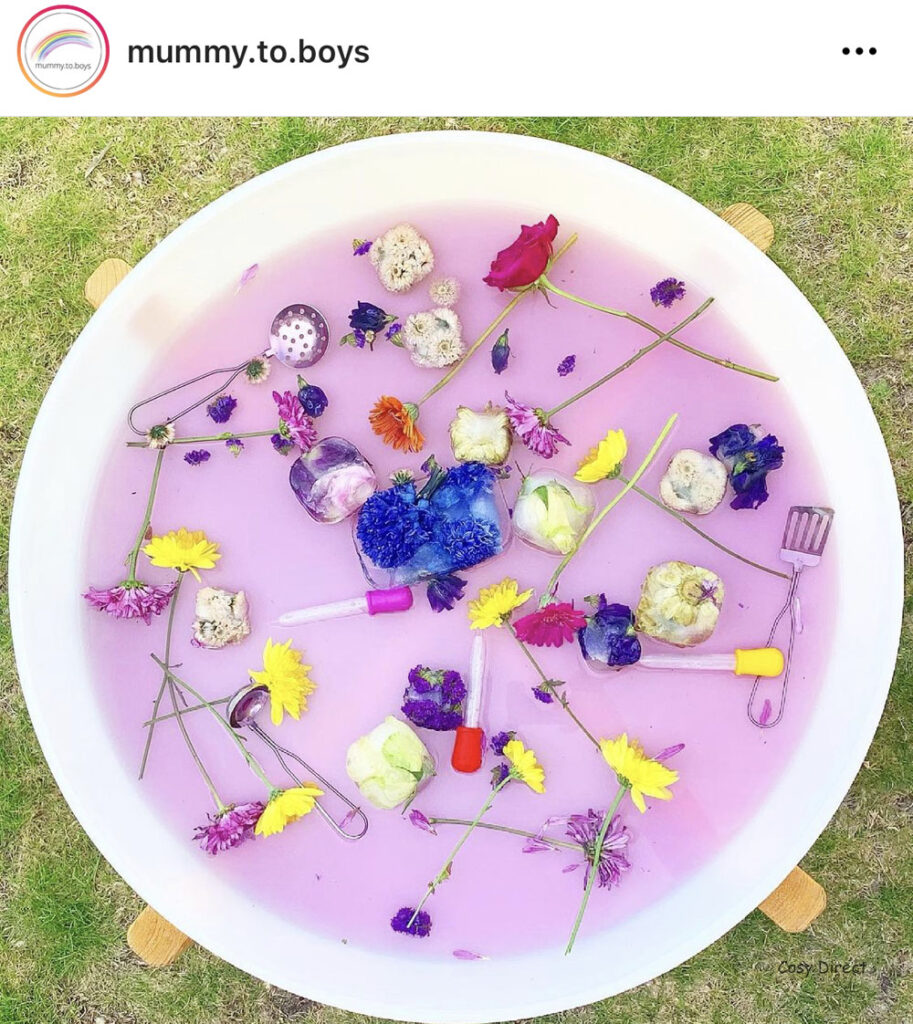
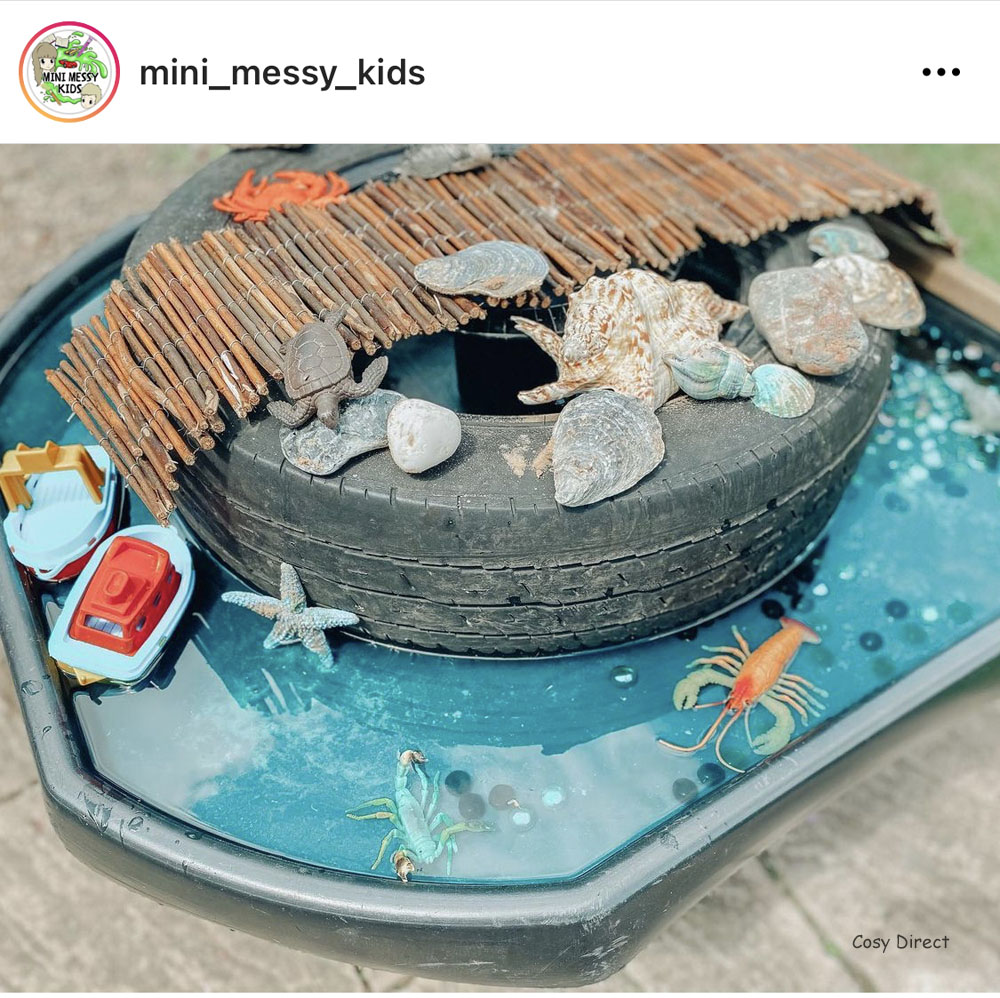
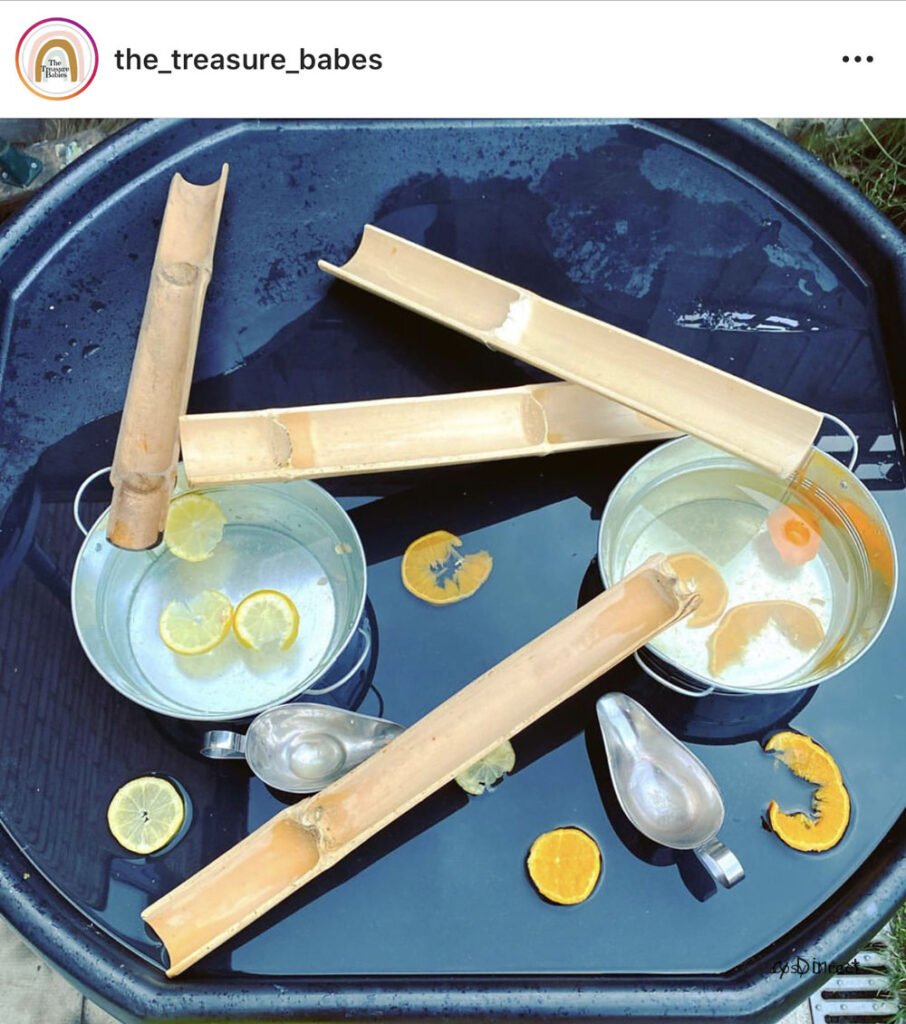
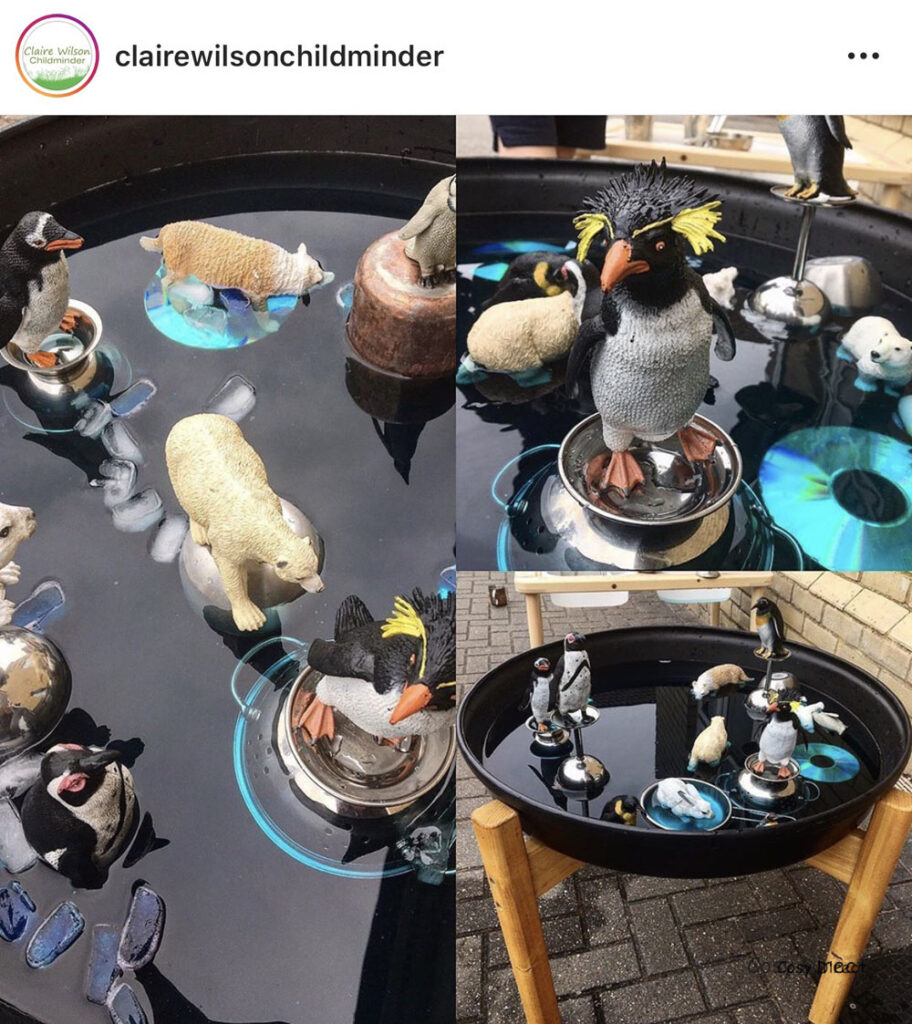
Freeze resources in water for children to explore - a sure fire way to create delight and wonder as children work out how to melt the ice. This is a real sensory experience thanks to the feel and temperature of the ice. Items to consider freezing include...
- Lego characters
- dinosaurs
- petals
- buttons
- leaves

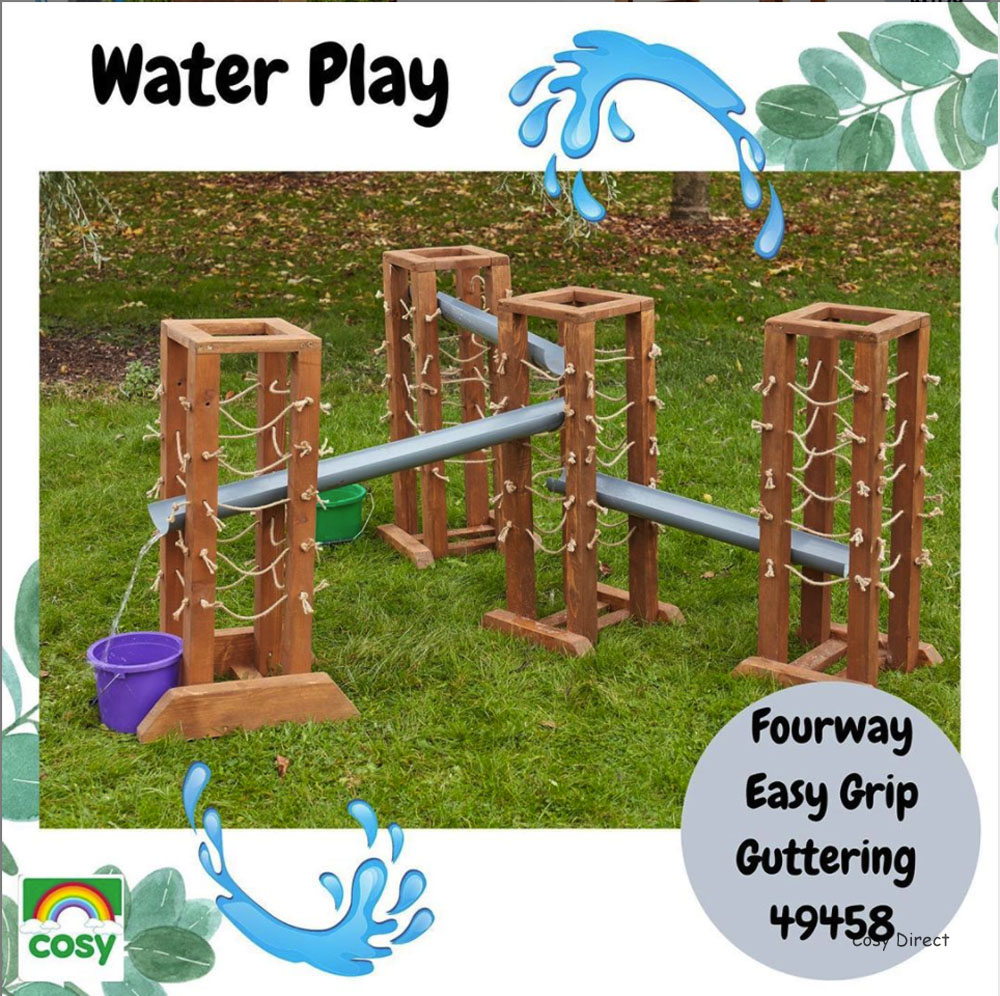
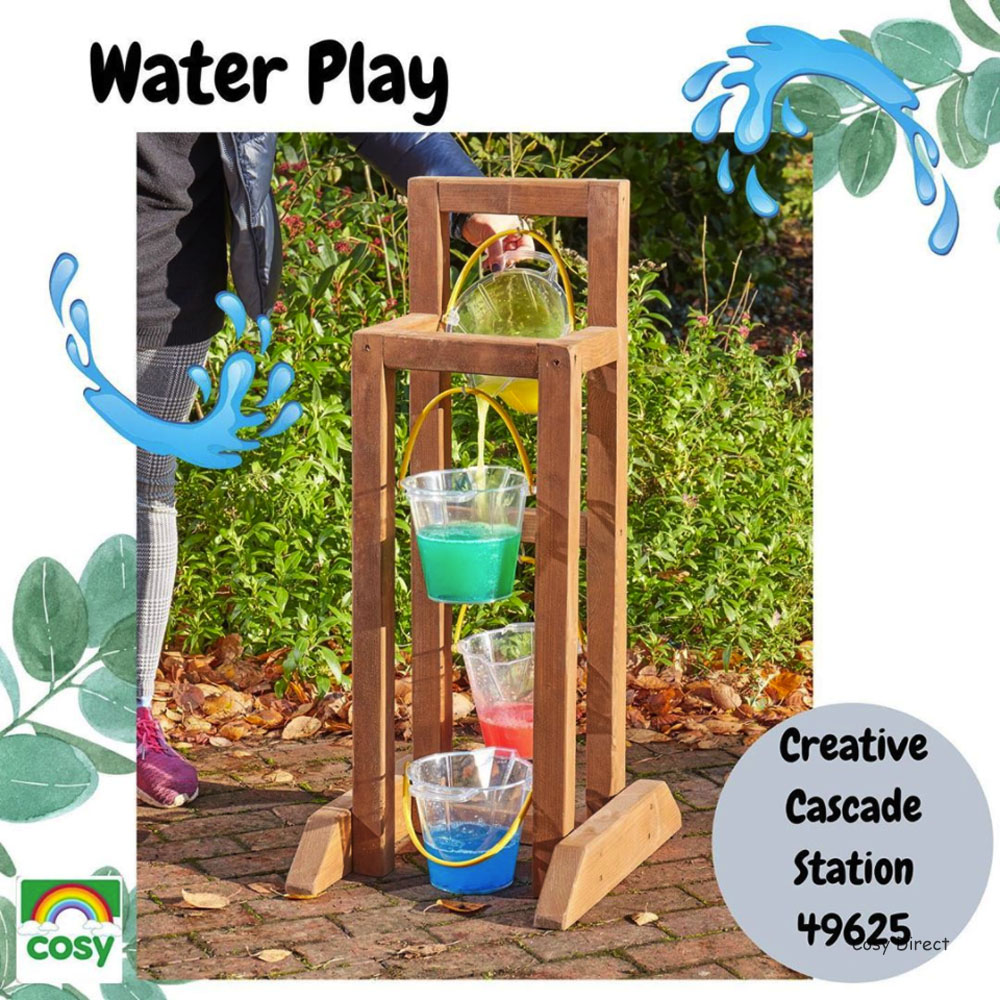
Take your water play to the next level by scaling up your water channelling play. Try using tuff spots at different heights connected by pipes, guttering and planks. This encourages problem solving, critical thinking and discussions about the properties of water. Offer different ways for children to move the water, such as sponges, buckets, funnels, ladles and bottles with holes in.
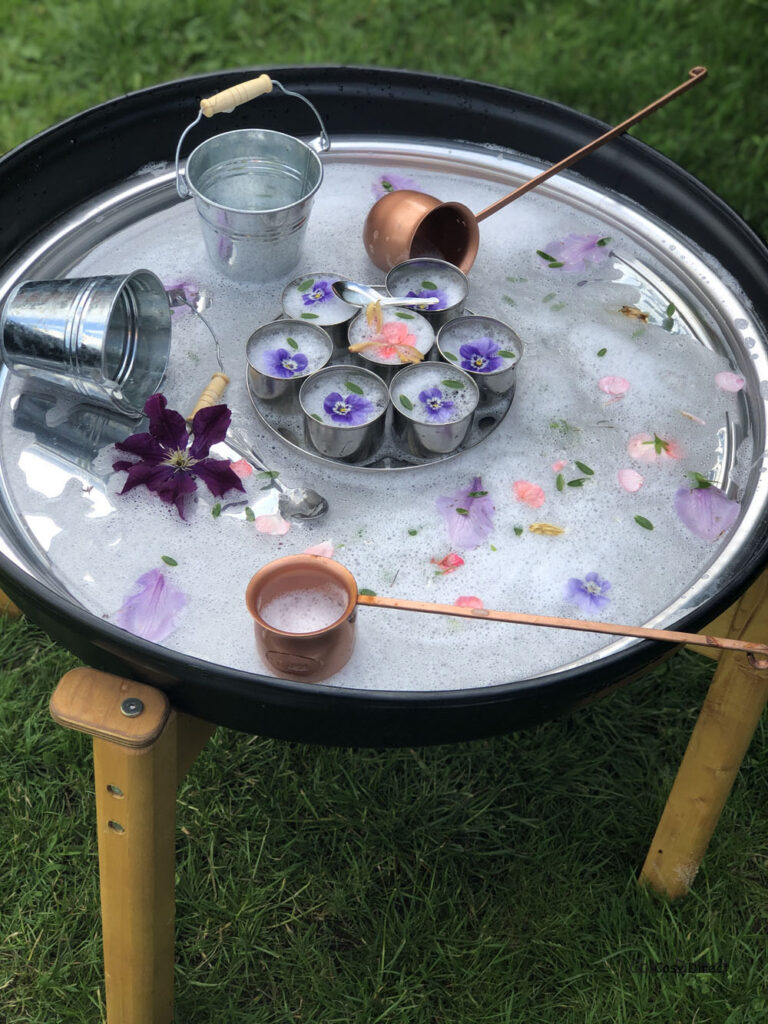
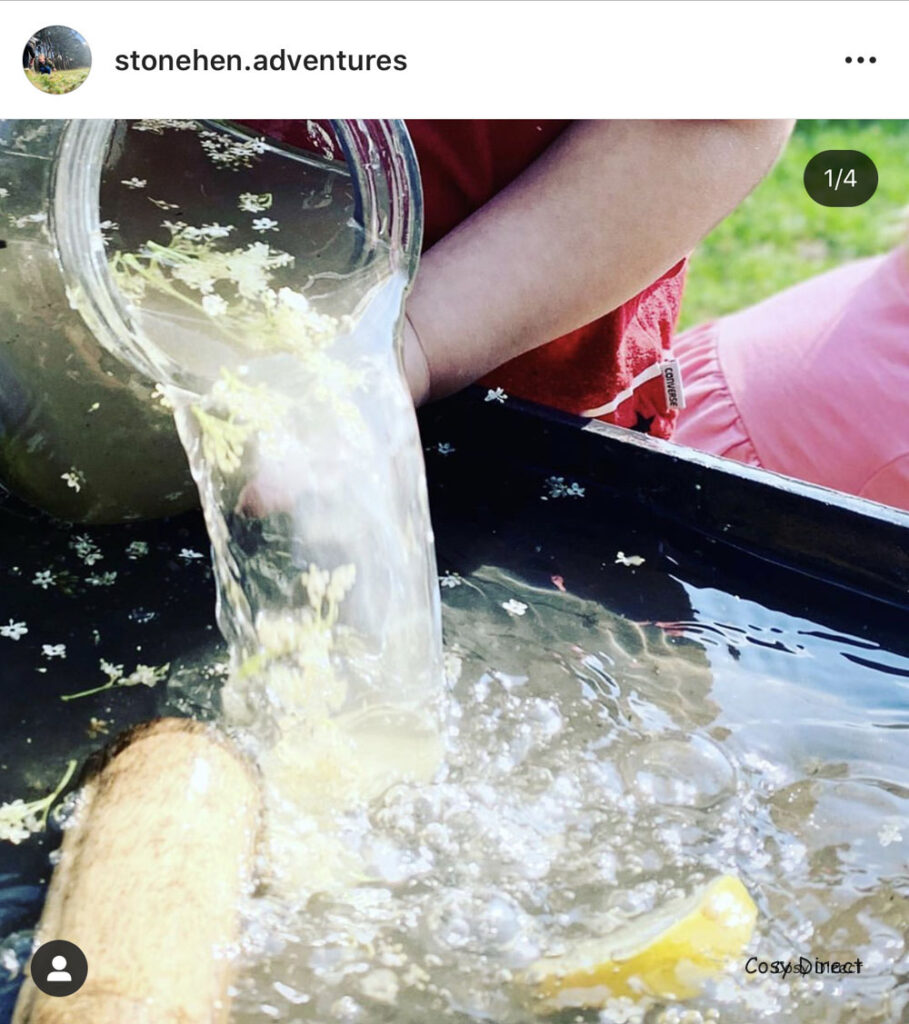
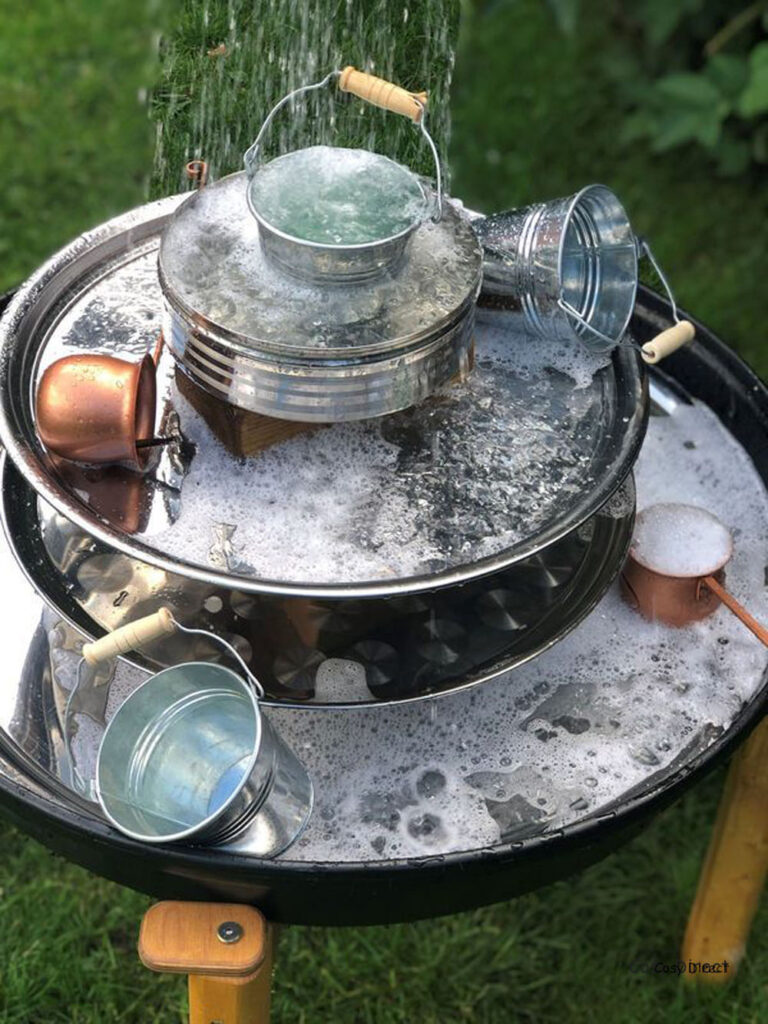
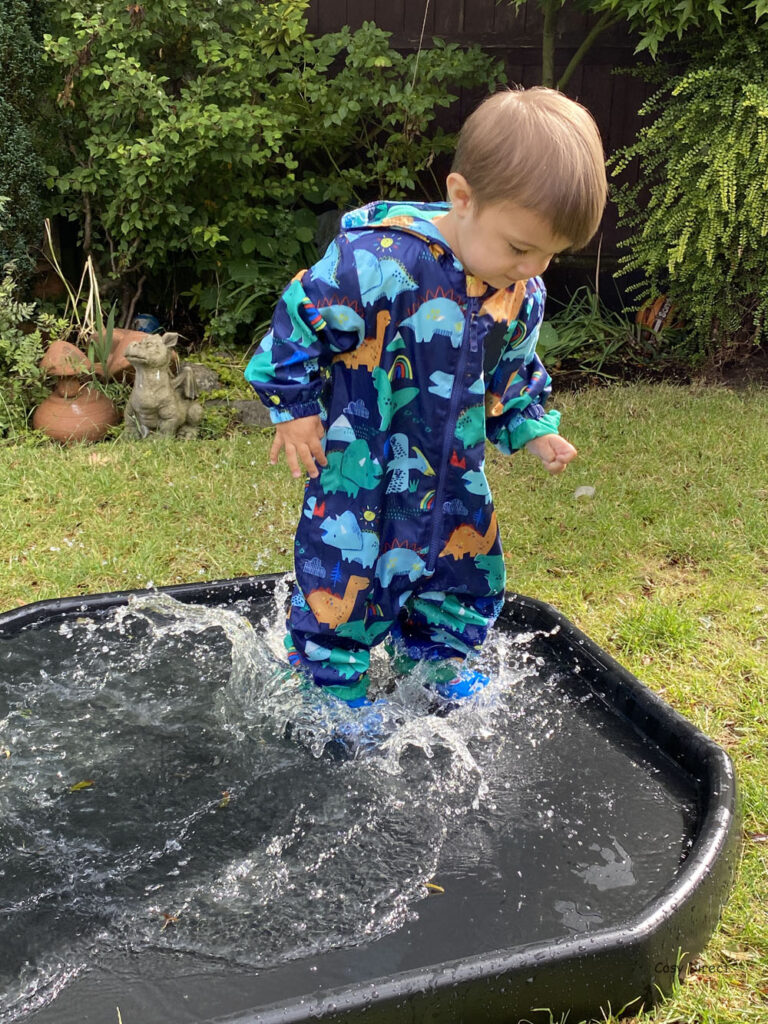
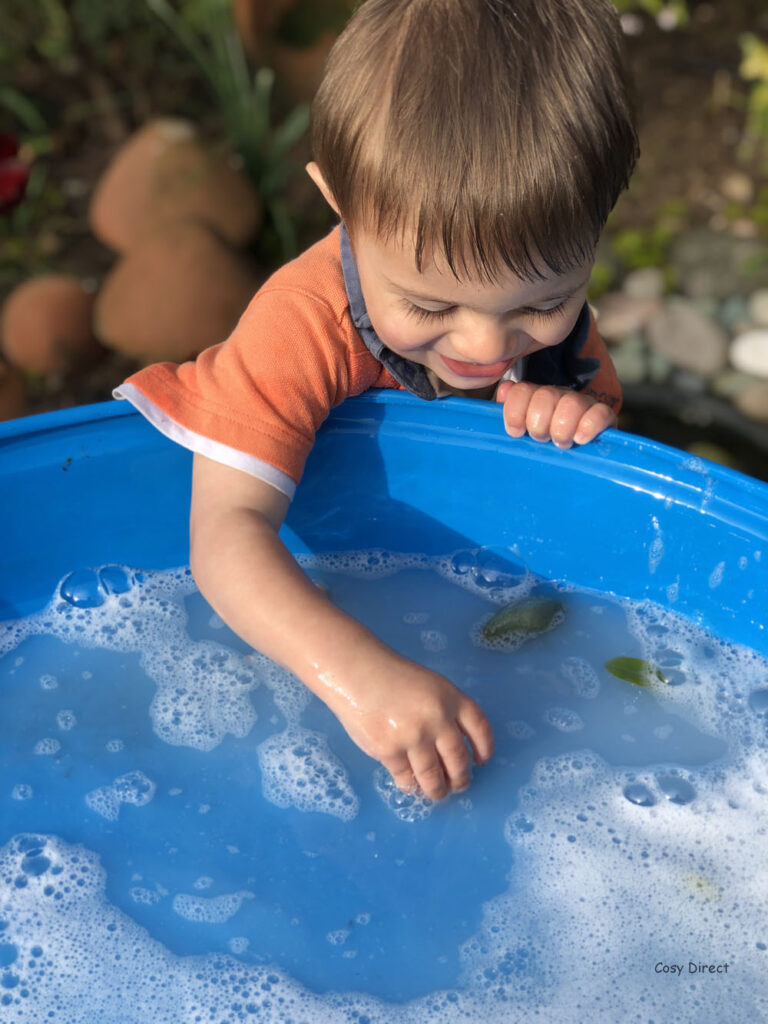
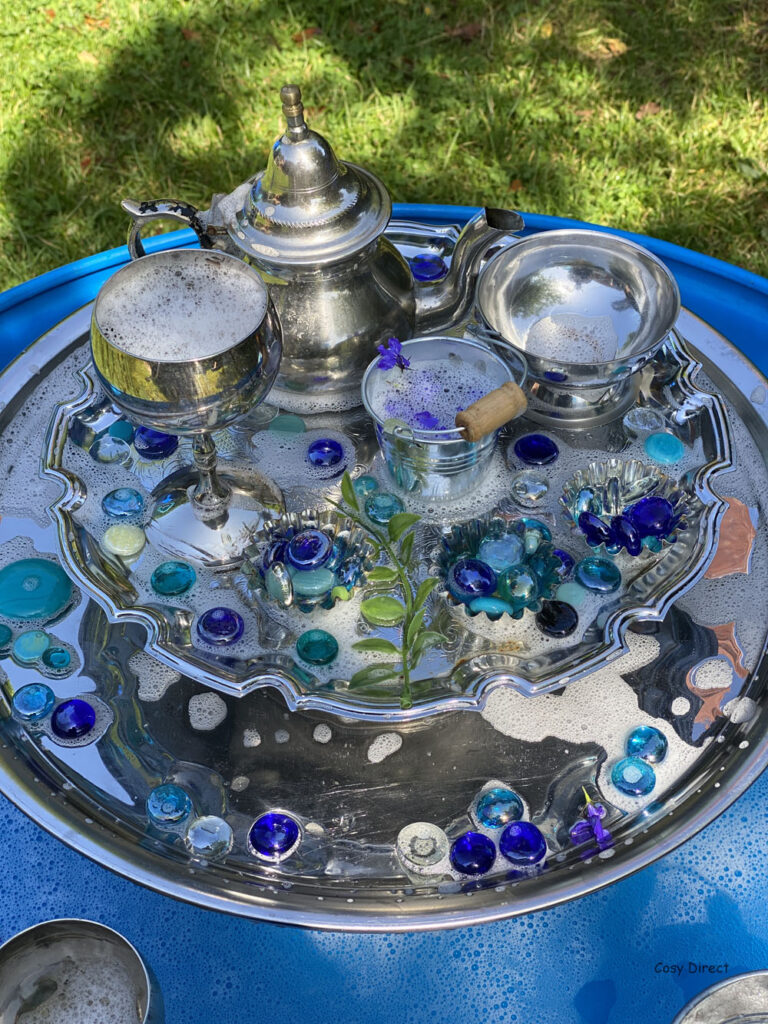
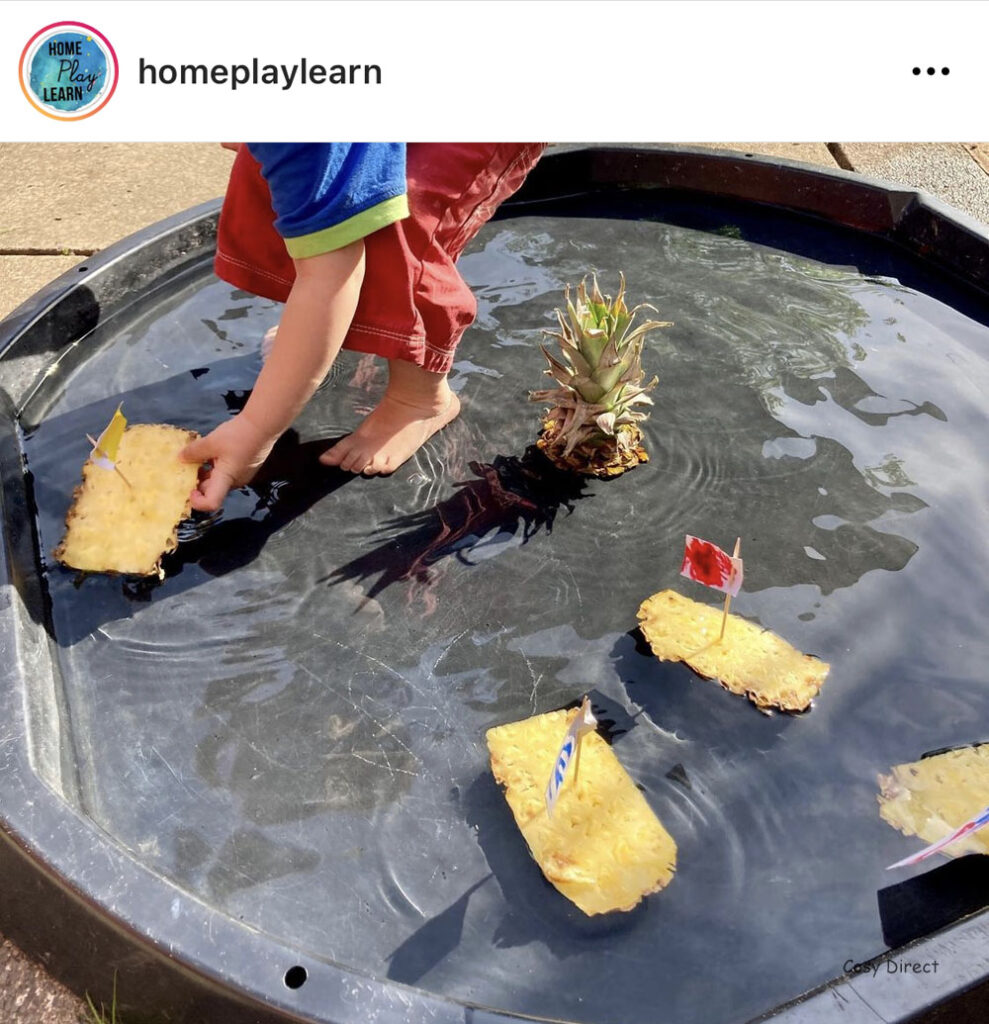
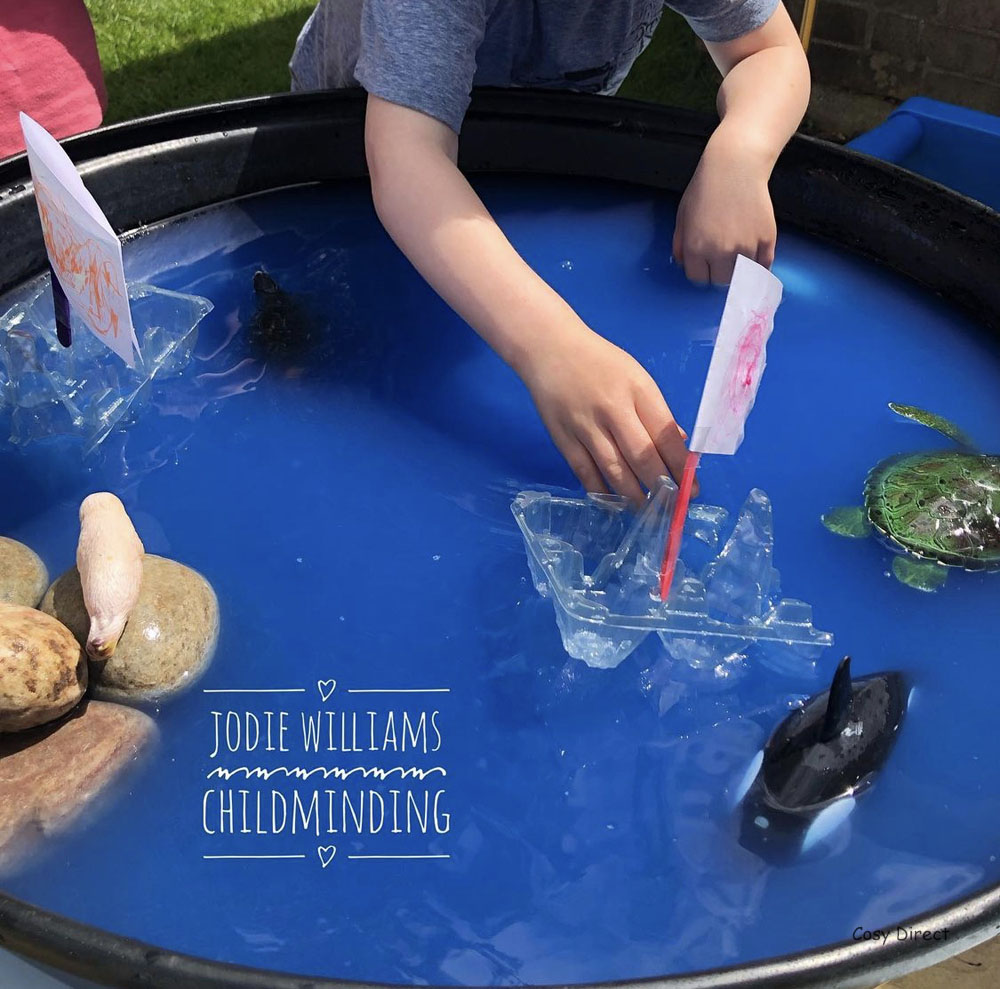
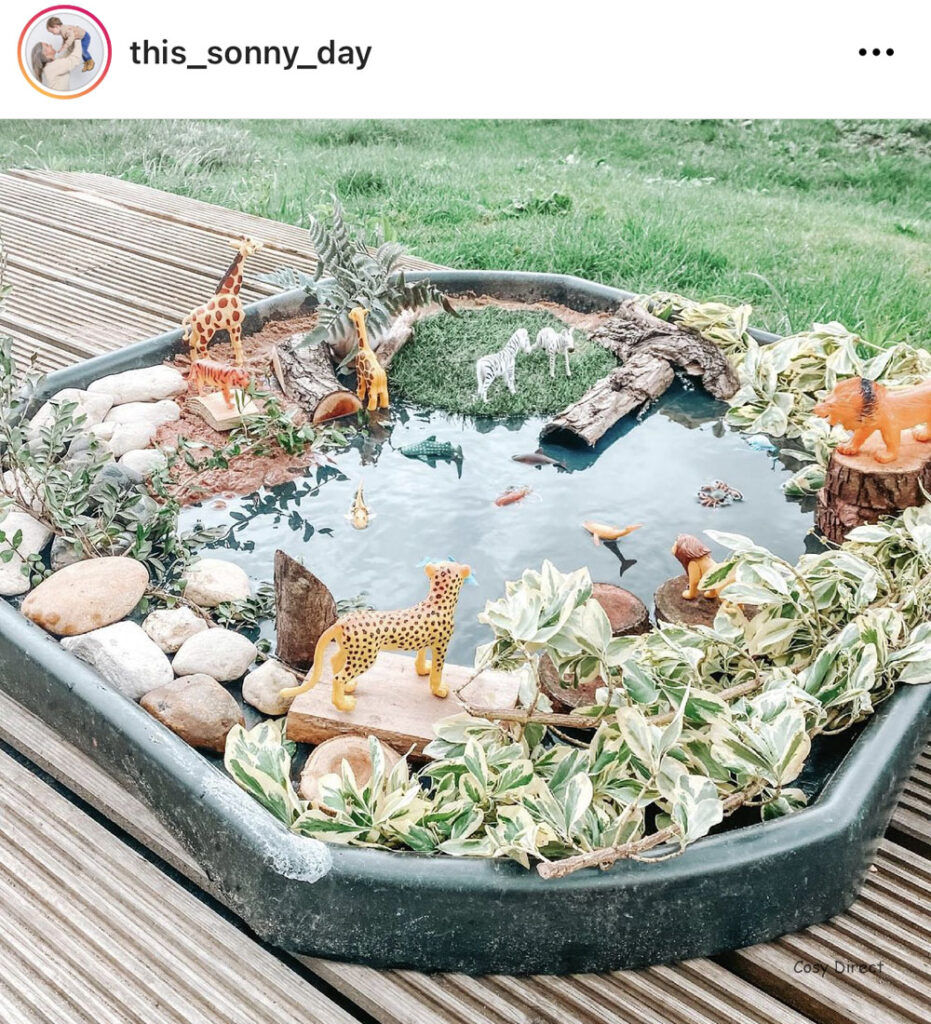
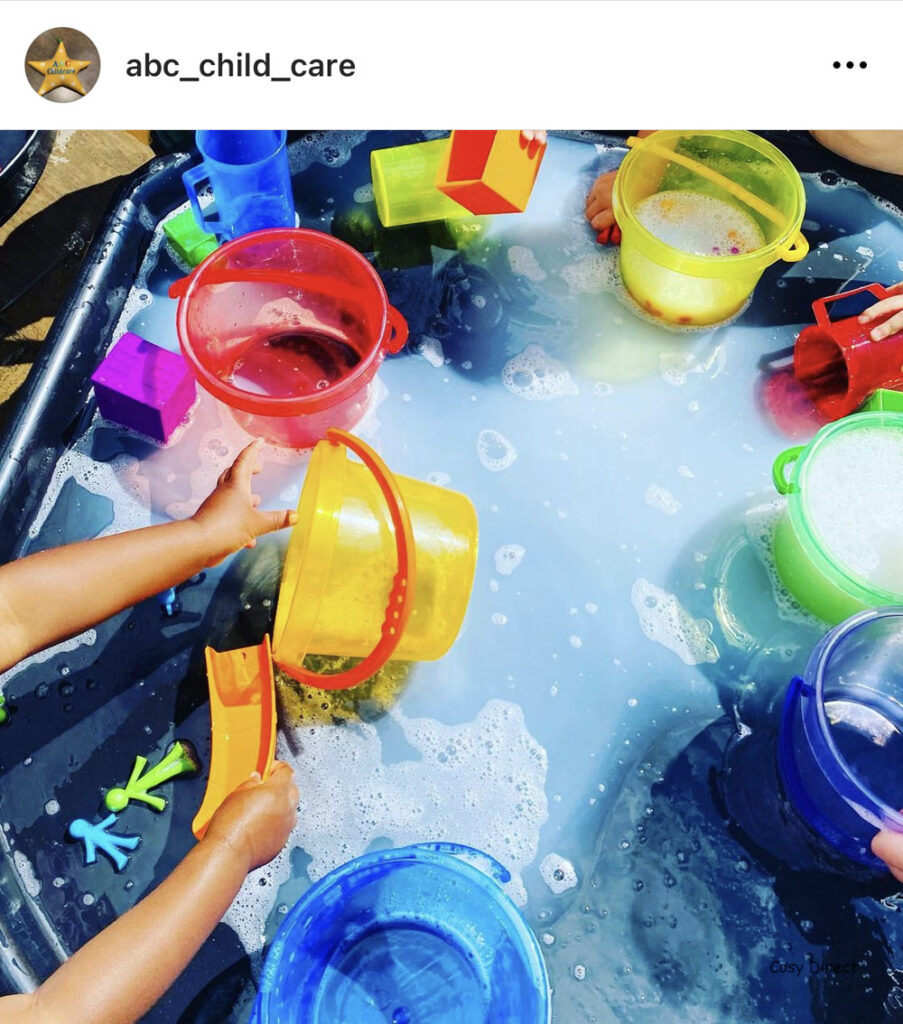
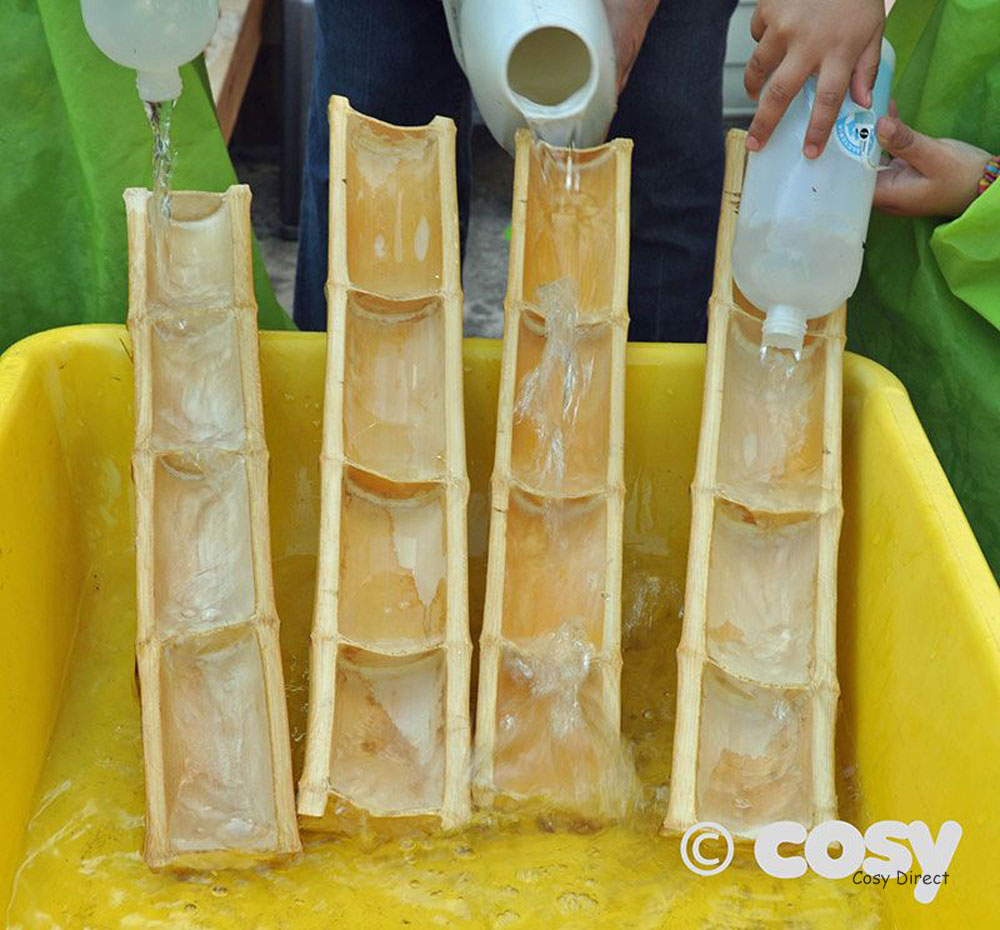
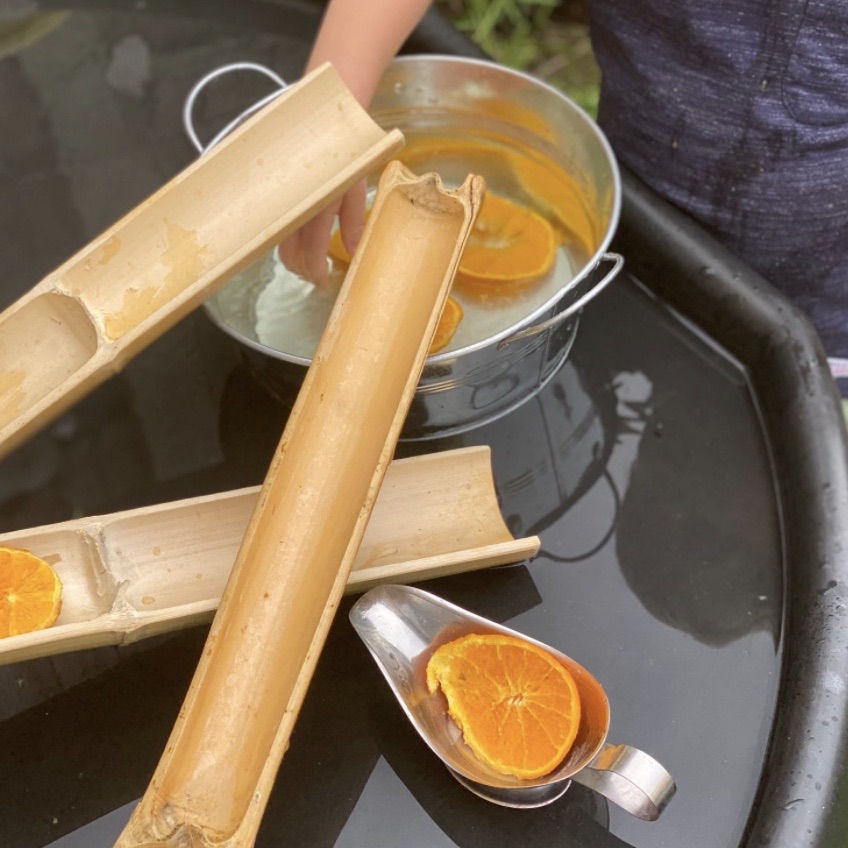
Get your paintbrushes and spray bottles out for some mark making fun! Provide children with jars, buckets and bowls of water plus a selection of brushes and rollers and just stand back and observe as children get creative. You could also scale this up if you have a large space by adding powder paint to water for a colourful sensory experience. Use full size brooms, fly swatters, washing up brushes and paint rollers to move the coloured water around. What shapes and patterns can you make?
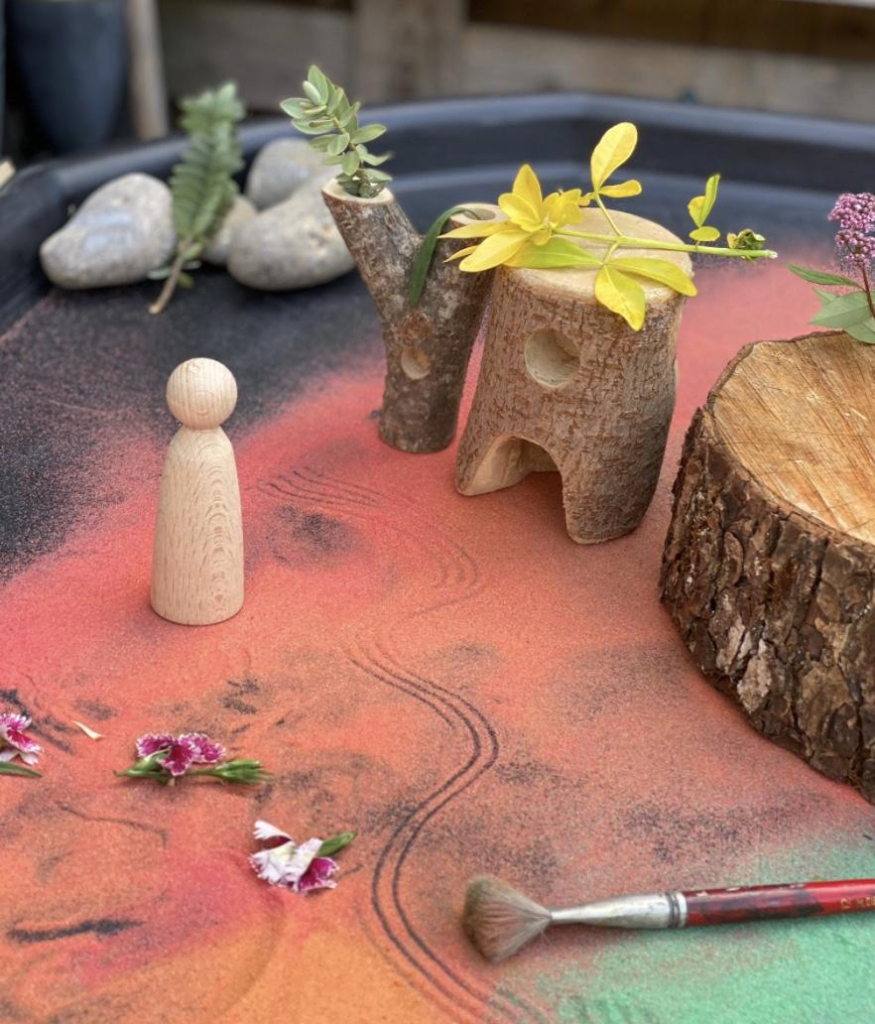
The impact....
Water and sand are fantastic for open ended play, offering enormous scope for impacting on learning and development. They naturally encourage collaboration with children working together to problem solve, share and turn take as well as experience challenge. The nature of collaborative play inspires communication and language development as children share ideas, make plans and create a narrative to play along to. This type of play also gives rise to mathematical language and understanding as children experiment with volume, capacity, size, shape and position.
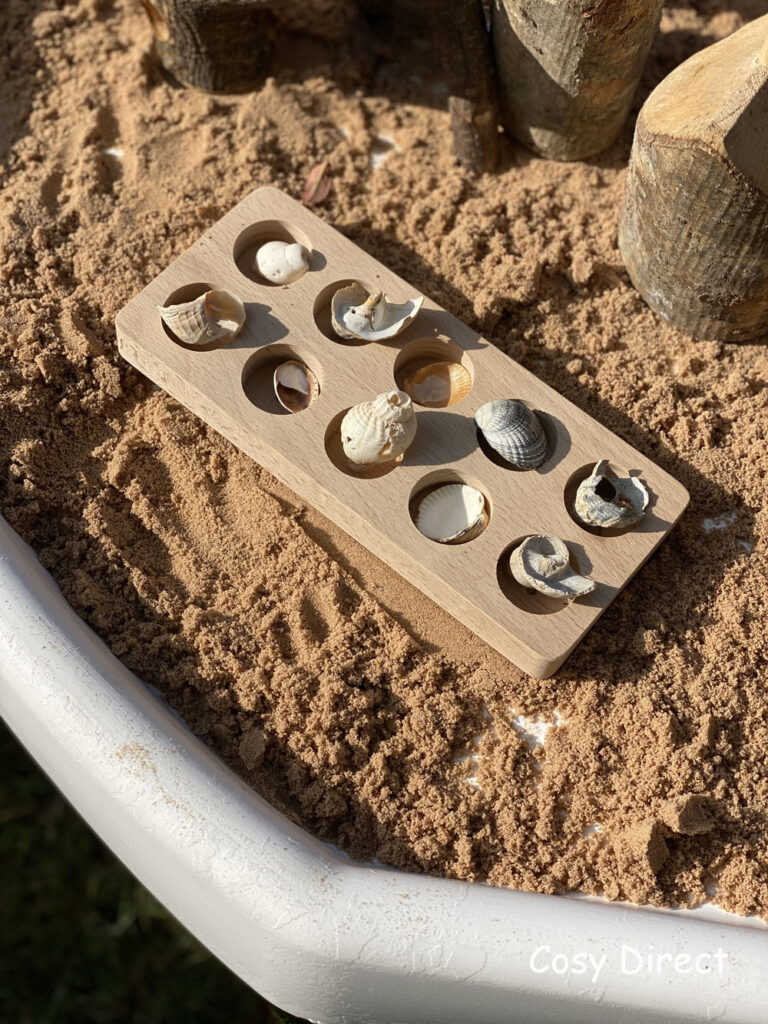
As children explore the properties of sand and water, they are building fine and gross motor skills, getting little fingers ready for writing. They will be tipping, pouring, moving and carrying, using their fingers and developing hand eye coordination and dexterity.
We think you'll agree that sand and water play can be really inspiring areas where children build a wealth of skills.
We hope that you feel inspired by these Sand and Water Play activities for children. Don't forget to tag us in your play for the chance to be featured.
Don’t forget to share your Sand and Water Activities with us on our social channels!
Facebook: https://www.facebook.com/cosydirect/
Twitter: https://twitter.com/cosydirect
Instagram: https://www.instagram.com/cosydirect/
Visit #CosyTuffSpot and #CosyGreenTeam to see some Recycled Water play ideas.
With thanks to The Cosy Creatives for this blog post.
